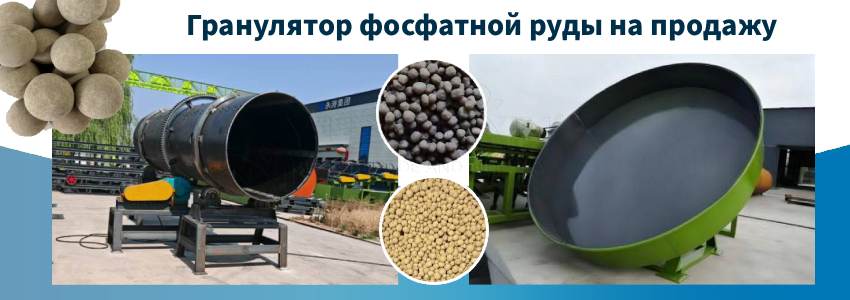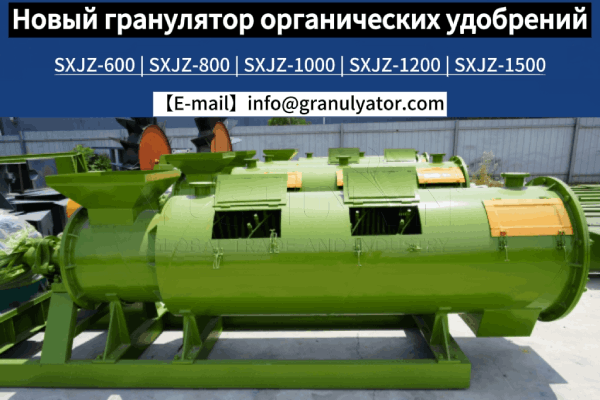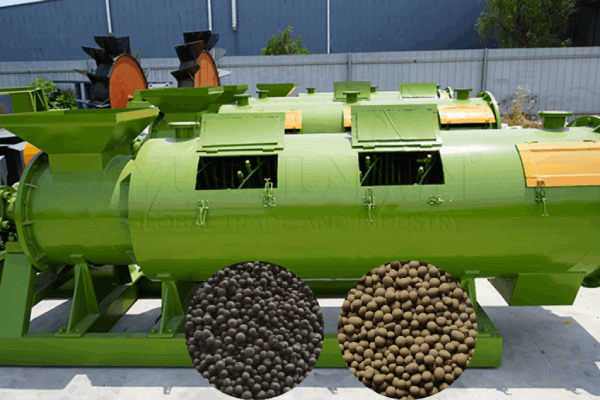С ростом спроса на эффективные фосфорные удобрения в сельском хозяйстве, рациональное использование фосфоритной руды становится важной задачей для отрасли удобрений. Гранулятор фосфоритной руды, являясь основным оборудованием современной линии по производству фосфорных удобрений, благодаря высокой эффективности гранулирования, однородности гранул и простоте эксплуатации, пользуется всё большей популярностью среди предприятий химической промышленности. В этой статье рассказывается о принципе работы, преимуществах и применении гранулятора фосфоритной руды в производстве удобрений.

Что такое гранулятор фосфоритной руды
Гранулятор фосфоритной руды — это оборудование, преобразующее порошкообразное или мелкодисперсное сырьё фосфоритной руды в гранулы определённой прочности и размера. После процесса гранулирования такие гранулы легче транспортировать и хранить, а также обеспечивают лучшую растворимость и эффективность при внесении в почву, что значительно повышает коэффициент использования удобрений.
Принцип работы
Грануляторы фосфоритной руды, как правило, используют барабанное, зубчатое или дисковое гранулирование. Например, при дисковом гранулировании порошок фосфоритной руды в гранулирующем диске под воздействием влаги и вращательного движения постепенно скатывается в округлые гранулы. Изменяя угол наклона и скорость вращения диска, можно контролировать размер и однородность гранул, чтобы соответствовать требованиям к различным видам фосфорных удобрений.
Основные преимущества
1. Повышение выхода годной продукции
Гранулы после гранулирования имеют правильную форму и однородный размер, удобны для упаковки и транспортировки, снижают вторичное пылеобразование.
2. Ускорение высвобождения питательных веществ
Оптимизированная структура гранул улучшает скорость растворения фосфора в почве, облегчая его усвоение растениями и усиливая действие удобрения.
3. Широкий диапазон используемых материалов
Гранулятор подходит не только для разных типов фосфоритового порошка, но и для совместного использования с другими компонентами (например, связующими веществами, микроэлементами) для повышения качества и ассортимента удобрений.
4. Стабильная работа оборудования
Современные технологии гранулирования, разумная конструкция, простота обслуживания, низкое энергопотребление, высокий уровень автоматизации подходят для непрерывного производства.
Области применения гранулятора фосфоритной руды
Линии по производству фосфорных удобрений: подходит для выпуска однофосфорных и комплексных удобрений (NPK и др.)
Заводы по глубокой переработке руды: улучшает физические свойства фосфоритовой руды, облегчает последующую обработку и транспортировку
Сельскохозяйственные и химические предприятия: позволяет повысить качество удобрений и удовлетворить рынок высококлассными гранулированными фосфатными удобрениями
Перспективы развития
С продвижением экологически чистого земледелия и биоразлагаемых удобрений грануляторы фосфоритной руды развиваются в направлении повышения эффективности, энергоэкономичности, автоматизации и интеллектуализации. Новое оборудование также учитывает вопросы сбора пыли и очистки выбросов, что способствует устойчивому развитию отрасли фосфорных удобрений.
Гранулятор фосфоритной руды — это ключевое оборудование в процессе производства фосфорных удобрений: он не только повышает качество продукции и эффективность технологического процесса, но и способствует рациональному использованию фосфорных ресурсов. Выбор подходящего гранулятора поможет предприятиям занять лидирующие позиции на рынке удобрений и достичь двойной выгоды — экономической и экологической. Более подробную информацию можно найти на сайте:https://www.granulyator.com/product/granulyator-fosfatnoy-rudy-na-prodazhu/







